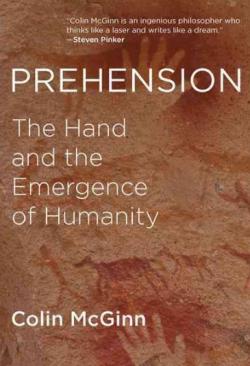By John Pickard
It is sometimes interesting to step aside from the hurly-burly of politics and to read and think about other, more peripheral issues. This is one such issue. I wrote an article for the Summer 1984 issue of the Militant International Review entitled, Engels and Human Development. This article was a look at Engels’ pamphlet, The Part Played by Labour in the Transition from Ape to Man, in the light of more modern scientific enquiry. I suggested that Engels’ article, published in 1876, was a triumph for the method of dialectical materialism in that it was indeed vindicated by modern Science.
By “labour”, Engels meant physical, manual work. In other words, he was arguing, it was the use of the hands in making and manipulating tools, that was the basis of human intelligence, the growth of the brain, as well as language and culture. Mankind, Engels wrote, is the only animal that engages in labour. “Animals in the narrow sense also have tools, but only as limbs of their bodies…Man alone has succeeded in impressing his stamp on nature.”
“First comes Labour”, he wrote, “after it and side by side with it, articulate speech – these were the two most essential stimuli under the influence of which the brain of the ape gradually changed into that of man.”
Engels placed great significance on the evolution of the human hand which was the precursor of “labour” or the manipulation of tools. “By the combined functioning of the hands, organs of speech and brain, not only in each individual but also in society, human beings became capable of executing more complicated operations…”
Since Engels, many hundreds of hominid fossils of varying ages have been discovered around the world. It is now well-established, from discoveries in Africa especially, that the evolution of the hand, was the first element in the evolution of a modern human anatomy. With the famous ‘Lucy’ fossil, for example, Australopithecus afarensis (three and a half million year ago), we saw an animal whose brain size (and assumed intellectual capacities) were similar to modern chimpanzees. But the crucial difference was that A afarensis had evolved an upright stance and the beginnings of a modern hand.
My article of thirty-four years ago, about another written more than a hundred years before that, was brought to mind in another book recently published: Prehension: The hand and the Emergence of Humanity, by Colin McGinn.
McGinn is not a scientist. He is a philosopher with a knowledge of science and evolution. He sometimes (admittedly) goes off into flights of fancy, but he has nevertheless produced a well-argued and coherent addition to the basic proposition of Engels. He offers right through that early period of human development – when Lucy might have been alive and wandering upright on two feet, on the African grass – a very believable and credible story of human development. Starting with the hand and only with the hand.
The single most important adaption in our evolution
McGinn quotes a 1980 book Hands, by John Napier, “One cannot emphasize enough the importance of finger-thumb opposition…it was probably the single most crucial adaptation in our evolutionary history.” It was from this first adaptation – only possibly because humans had lost the capacity to brachiate from branch to branch in the trees – that so many other things flowed. “Grip” became a key element in further development, both individually and socially. It was not ingenuity that led to the use of tools, McGinn argues, but the early use of tools and ‘grip’ that led to the development of consciousness.
“…what we find, as evidenced by their actual tool production, is a blooming tool mentality – the conceptual ‘instrumentalization’ of the world, in effect…as the brain coevolved with tools, so the hands coevolved with tools. In fact, there was a three-way coevolution…it became the ‘survival of the handiest’. This we see a constellation of factors evolving in unison: tool use (with tool cognition), hand dexterity, brain enhancement and social structures.”
What is particularly persuasive and new in this book is the way in which McGinn paints a picture of the development of language in this mix. He argues strongly that it is likely that early language developed as a language of gesture only – the human larynx being a relatively recent evolutionary development. He even explores in some very plausible detail how syntax (subject, verb, object) may have developed from gesture alone. It was likely to be a later stage – and an advantageous development – that spoken language could supplement and then replace gestural language. Once the larynx took over from the hands, it would free the hands for and even wider repertoire of dexterity and it would still guarantee communication at night or otherwise unseen.
An important element in the whole evolutionary process, of course – and something McGinn weaves in – is the social element. Humans did not evolve in a ‘dog eat dog’ competition as the apologists for capitalism would have us believe, but in a community where mutuality and cooperation were the key elements. Human physical evolution has all but ended in the last fifty or one hundred thousand years, but this has been replaced by cultural evolution as language, writing, science, art and literature have been added to the full repertoire of human behaviours.
Colin McGinn’s book is not always an easy read, but the opaque passages are relatively few. It is an interesting and worthwhile read and it takes nothing away from the fundamental view put forward by Karl Marx’s closest collaborator, Friedrich Engels, the best part of a century and a half ago.
December 12, 2018



